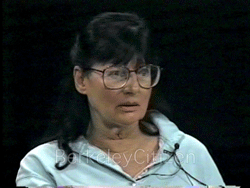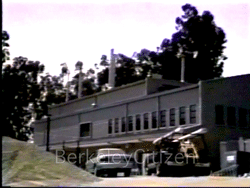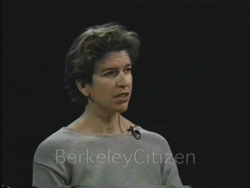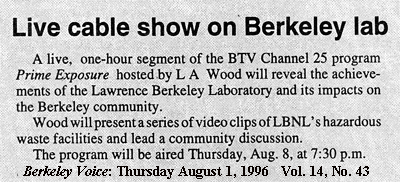Berkeley Community Survey of the
Lawrence Berkeley National Laboratory
Lawrence Berkeley National Laboratory 101 The hour-long cable access program was broadcast live August 1, 1996 on BTV Channel 25, now Ch28. This was produced as a citizen introduction to the Lawrence Berkeley National Laboratory. Discussions include LBNL’s management of radioactive and mixed waste, radiation contamination, regulatory oversight, and fire. |
 |
 |
 |
 |
 |
 |
 |
 |
|
Introduction begins...
The story of the lab begins in the mid 1920's at the University of California, Berkeley. The creation of a new Physics Department and the early work of Professor Laurence and his colleagues in the area of particle physics started the research explosion which continues today at LBNL. The rad lab, as it was known then, was officially created in 1935. Professor Lawrence, seen here on the right, the new !ab, and the team of scientists that he assembled helped to produce a body of research which resulted in a Nobel Prize in Physics.
During World War II, these advances in particle physics were an important part of the Manhattan Project and the creation of the first atomic bomb. The Lab's new mission of national defense dictated the direction of the research as well as the secrecy which has pervaded the lab since the Cold War years. And this, despite the unclassified nature of most of LBNL's current research.
The Rad Lab soon outgrew its campus location and gradually moved most of its laboratory work to the hills above the campus. Here it has remained for more than sixty years. LBNL now encompasses 130 acres and remains almost hidden among the canyon walls and ridges of the Berkeley hills. It's not surprising to find that few residents in the city of Berkeley realize how large a community LBNL has become.
The Lab is comprised of approximately 100 buildings and 3000 employees, provides research opportunity for about 1600 visiting scientists and 600 students and teachers. Today its research draws from many disciplines, and the facility supports a wide range of research activities from physics to medicine. LBNL's future is certainly linked to the rising bio-tech industries in the Bay Area.
AND...
This is the alarm for the national tritium labeling facility. Three years ago, it rang all weekend, signaling a tritium discharge, before someone came in on the following Monday. The labeling facility is used extensively by industry. The tritium lab has become a source of controversy over its operations as they relate to toxic pollution and a nuclear-free Berkeley. These are called glove boxes. They allow for protective handling in a cleaning process where tritium is removed. It is the residue after the box is cleaned which is caught in the stack and discharged into the air. Although the tritium lab is currently shut down, and as such can claim zero emissions, it is authorized by U.S. EPA to discharge 80 to 100 pico curies per year into the surrounding hill area...
Berkeley Citizen © 2003
All Rights Reserved
All Rights Reserved
